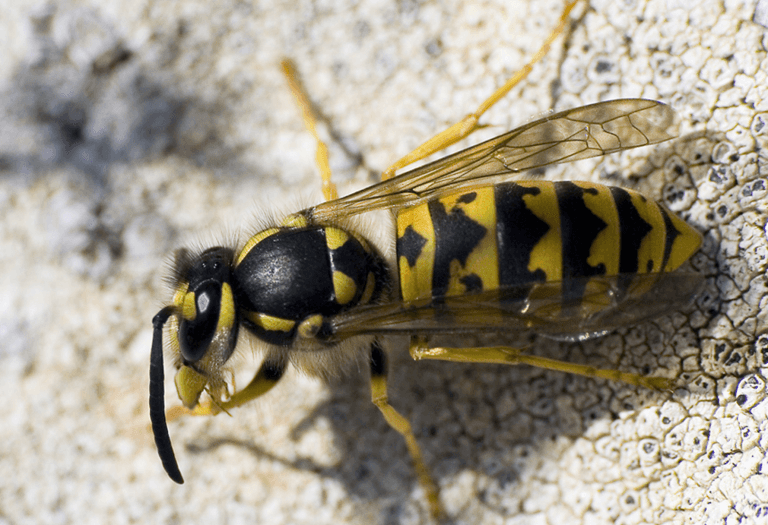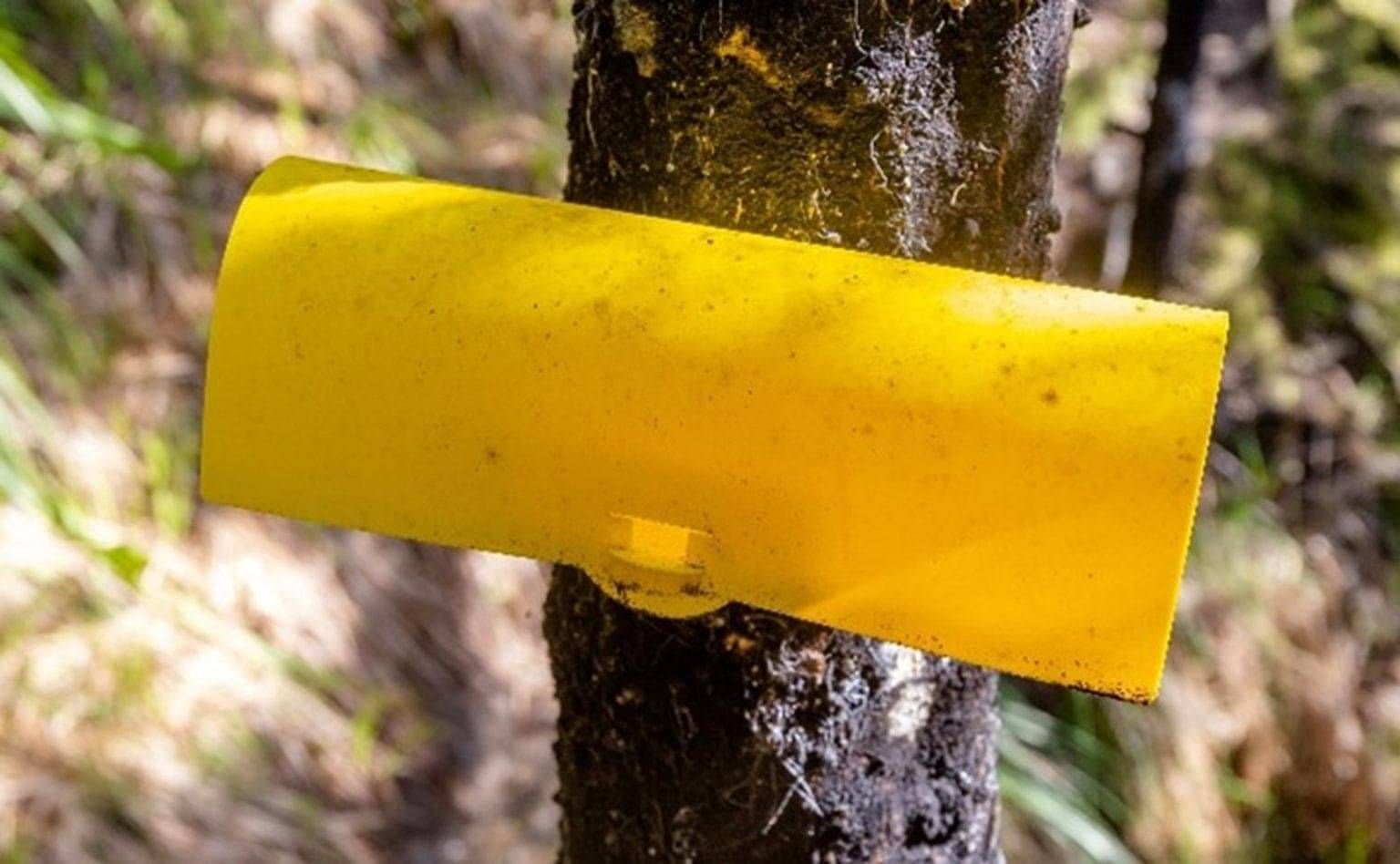Wasps
Why are they a pest?
Why are they a pest?
Wasps can sting again and again, bees only once leaving the sting behind.
Wasps are having a devastating effect on our environment, destroying and driving out bees, significantly reducing pollination, depriving native birds and lizards of their normal insect diet and thus creating a huge imbalance in the NZ ecosystem.
They are a real pest searching out food and especially sugar, annoying outdoor activities
Wasps will decimate fruit crops in search of sugar
Wasps predate birds and especially chicks in search of protein.
Wasps can destroy honeybee hives.
German Wasp (Vespula Germanica)
The German wasp and the Common wasp are very similar in appearance. The German wasp has strong black markings including an arrow-shaped mark down the middle of the abdomen with black dots either side. It has translucent wings, black antennae and yellow legs.
German wasp nests are brown owing to being made from live material. Nests can be in structures or most commonly under ground.


Common Wasp (Vestula Vulgaris)
The Common wasp has broader black bands that merge with the dots. It also has yellow legs and black antennae. Common wasp nests are grey owing to them being made from dead plant material. Common wasps are very efficient at harvesting sugar, they collect sugar at a faster rate than German wasps, spend less time feeding, have a faster turnaround to the nest, and can breed faster.
The Common wasp is more predominant at Lake Tarawera.
History and Life Cycle
European wasps were accidentally introduced into Hamilton, NZ, among aircraft parts during the 1940s and are now well established throughout NZ. In more recent years the common wasp, a much more aggressive species, appears to be well established and in some cases have taken over.
Young Queens are raised in the Autumn and after mating with the drones they hibernate in groups or individually. Except for the newly emerged young Queens, all of the community including the old Queens die in Autumn. Queens are evident in the Spring as they emerge from hibernation and start to build their own nests, lay their eggs and tend their brood.
As worker and drone numbers increase the Queen retires from work to become an egg-laying machine and losing her ability to fly.
Wasps are the ‘flying tigers’ of the insect world. Wood fibre (pulp) is scraped off trees, mixed with saliva and used to construct ever more cells and the nest envelope. Worker wasps make 50-80 visits per hour throughout the day. Normal foraging radius for food is 50-150 metres, very occasionally 1-2 miles. Tending to the brood 24 hours a day, wasps literally work themselves to death. The average life-span of a worker is 8-16 days.
Nests can measure from just a few centimetres up to 2 metres or more. A nest can have several hundred to tens of thousands of cells. Nests are continually enlarged and cells are cleaned and reused over and over. Cell size seems to be a determining factor in the production of Queens. Nest temperature is maintained at 28-32 degrees C and hives are often used for several seasons before being deserted. Once vacated, a hive will never be used again.
Wasp migrations in any one year are on average 15km. Up to 30km have been recorded.
There are 4-5 stages of larval development before the larva seals itself into the cell upside down. Six to eight days later the pupa turns into an adult wasp.
Average time for each stage is six to eight days and a full cycle 23-29 days. Up to 8,000 Queens are produced in a single hive in one year, ensuring that the wasp population can sustain mortality rates of 99.9% and still continue to expand. Spring weather seems to be a major factor influencing the survival of Queens and consequently the number of wasps each season.
Un-fertilised eggs are always male workers.
Both proteins and carbohydrates form important parts of the wasp’s very comprehensive diet. Flies, spiders, caterpillars, dead birds and animals are decimated and reduced to fluids before being fed to the brood larvae. Nectar, honeydew, sugars and fruit also provide a prime food and energy supply. Wasps wings beat 35-75 times per second.
Wasps can sting again and again, bees only once leaving the sting behind.
Wasps are now having a devastating effect on our NZ environment, destroying and driving out bees, significantly reducing pollination, depriving native birds and lizards of their normal insect diet and thus creating a huge imbalance in the NZ ecosystem.
Wasps numbers of up to 50,000 per hectare have been recorded here in NZ.
How Can I Control Them?
Nest Eradication: Where you can locate a nest this is highly effective using a pyrethrum powder puffed into the nest entrance. Wasps naturally groom themselves and through that process ingest the powder and over a couple of days kill the nest.
Vespex: This is a wasp specific bait created in Nelson. We have a program using yellow bait stations situated along the Spencer Road. The bait timing is scientifically based on feeding habits.

Vespex-baited wasp station
